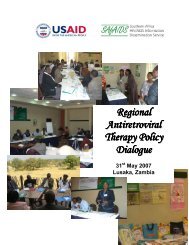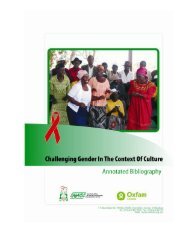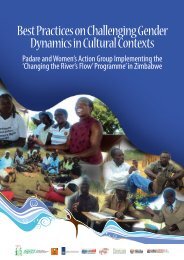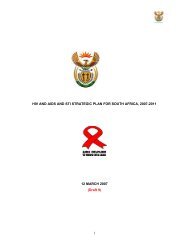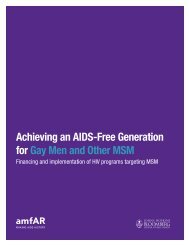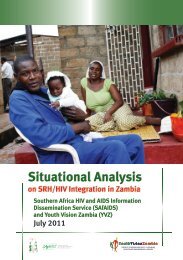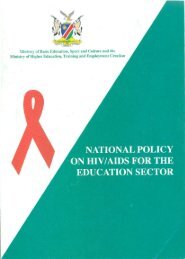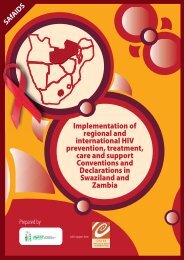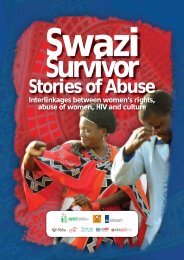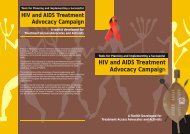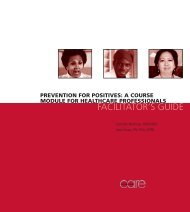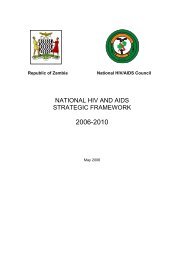CHILDREN TO THE FORE! - SAfAIDS
CHILDREN TO THE FORE! - SAfAIDS
CHILDREN TO THE FORE! - SAfAIDS
Create successful ePaper yourself
Turn your PDF publications into a flip-book with our unique Google optimized e-Paper software.
Understanding legal termsLaw: Principles and regulations established by Government and applicable to people, in the form oflegislation ,being an Act of Parliament,regulations,rules or by-laws,enforced by the judiciary.Policy: Action or procedure conforming to, or considered with reference to, law, as agreed bystakeholders.Act: A formal statement of the law passed by the Legislature.Legislature: A body of persons empowered to make or change the laws of a country (Parliament).Legislation:The act of making or enacting laws.Challenge participants,as individuals or as part of their organisation,to investigate what is being done atinternational level by large organisations like UNICEF, or at national and local level together with NGOs.Encourage participants to attend meetings, events and conferences, and continually question progressagainst targets set.They should not forget to ask questions and should remember to keep children at thecentre,always!Make a list of the feedback,and encourage participants to use this information to support the ScorecardAssessment activity on Day 4,which tracks community efforts against set goals.ACTIVITY 3: A RIGHTS-BASED APPROACH <strong>TO</strong> <strong>CHILDREN</strong>: COMMUNITY MAPPING EXERCISEAsk participants to prepare an area of the training space so that the whole group of participants can worktogether,or a few smaller groups can work separately.They may wish to clear an area to work on the flooror they may prefer to place several tables together. Each working group of participants will need a largesheet of blank paper.They will also need a copy of the Dialogue Chart for reference purposes.JaneNow we are going to do what is known as a 'mapping exercise’, so I hopeeveryone is ready to participate actively. We will use the dialogue chartdeveloped from community dialogues with children and adults. With thisinformation, let us work together to draw a very large community map. This willbe a participatory exercise in which everyone has a role.AbdulFirst let's draw the roads leading to people's homes, the local school, thewater well, the grinding mill, the store, trees, rocks, small roads, andpeople going about their daily lives, e.g. collecting firewood, ridingbicycles, walking, fetching water, etc. Also draw or point out (usingarrows) the important places you know but might find hard to reach, forexample, the district hospital, the clinic or the police station. Let's thinkabout whether there are child-friendly services in the community andinclude these as well. Somewhere that provides life skills training wouldbe an example of this.52Handbook on Child Rights and Culture



